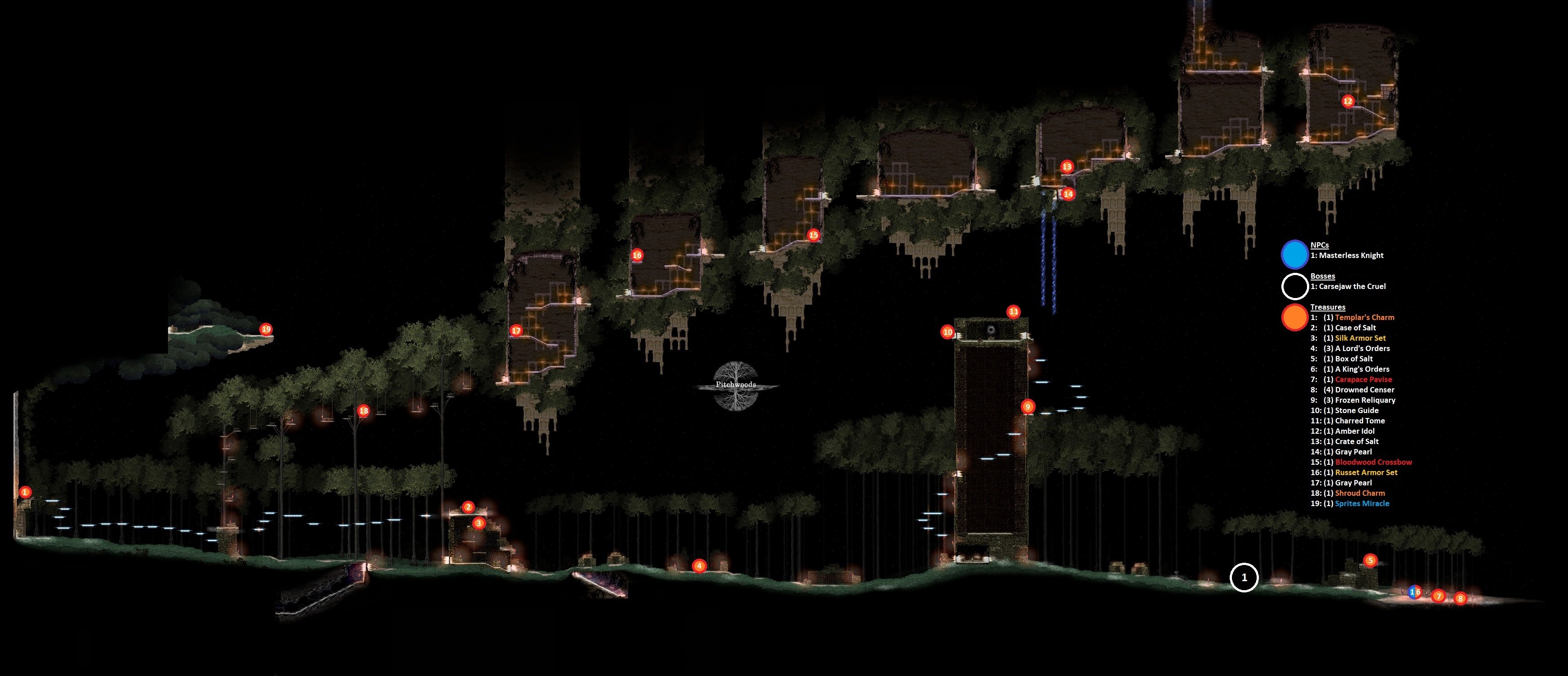

That sort of freeform navigation worked well in a 3D environment, when players had more peripheral vision and could see off into the distance. While non-linear platforming adventures like Symphony of the Night and Metroid provided players with maps so that they wouldn't get lost, Dark Souls wanted players to feel lost and made memorising its labyrinthine layouts part of the puzzle. One interesting discovery upon merging these two inspirations is how different navigation feels in a 2D world without a map. By the same token, Salt and Sanctuary feels like Castlevania donning Souls' whole wardrobe, and in a weird way Ska's obvious cribbing has resulted in a novel missing link between these two fabled franchises.
#Salt and sanctuary map item series#
Amusingly, these two series already seemed to be colliding with From Software's most recent outing Bloodborne feeling like Dark Souls in Castlevania's clothing.
#Salt and sanctuary map item software#
were letting us explore a non-linear gothic landscape long before From Software entered the fray, though it's been several years since Konami issued a 2D outing in the famous franchise. This new perspective gives Salt and Sanctuary's exploration and combat a sense of deja vu with a different series: Castlevania. Let's focus on that first point for a moment. Sanctuaries can be claimed to different guilds, but you can only belong to one at a time - not unlike Dark Souls' covenant system. This borderline plagiarism should be repulsive - and on some level it is - yet Salt and Sanctuary survives this obvious intellectual thievery based on two conditions: it creatively adapts From Software's template to a 2D plane, and it's a damn fine imitation. There's even stats for Strength and Dexterity that scale your weapons' damage output on an E through S ranking system. You equip various pieces of armour, weapons, and rings with a weight system that influences your mobility based on how much gear you're currently wearing. You fight by managing your stamina meter that temporarily depletes with every strike, block, and roll. Not only does Salt and Sanctuary crib the Souls series' unique respawn mechanic - in which you need to reclaim your lost experience by retracing your steps - it copies Souls' entire combat system and RPG structure wholesale. Salt and Sanctuary is so beholden to Dark Souls' template that it's a little shocking the two-person Seattle studio hasn't been sued.

Ska Studios doesn't try to hide that fact. But good lord, this is a lot like Dark Souls. So when you hear that The Dishwasher: Vampire Smile developer Ska Studios' non-linear action platformer Salt and Sanctuary was going to be "like Dark Souls", it's easy to write it off as another buzzword attempted to raise interest in the umpteenth metroidvania on the digital market. "It's like Dark Souls with cars" people have said of Dirt Rally. "It's like Dark Souls with zombies" Ubisoft would say about Zombi U. Why wouldn't they? From Software's instant classic began as a niche import with Demon's Souls before taking the world by storm and spreading its influence everywhere. Lots of games compare themselves to Dark Souls these days. Salt and Sanctuary is a derivative Dark Souls clone - but it's a shockingly good one.


 0 kommentar(er)
0 kommentar(er)
